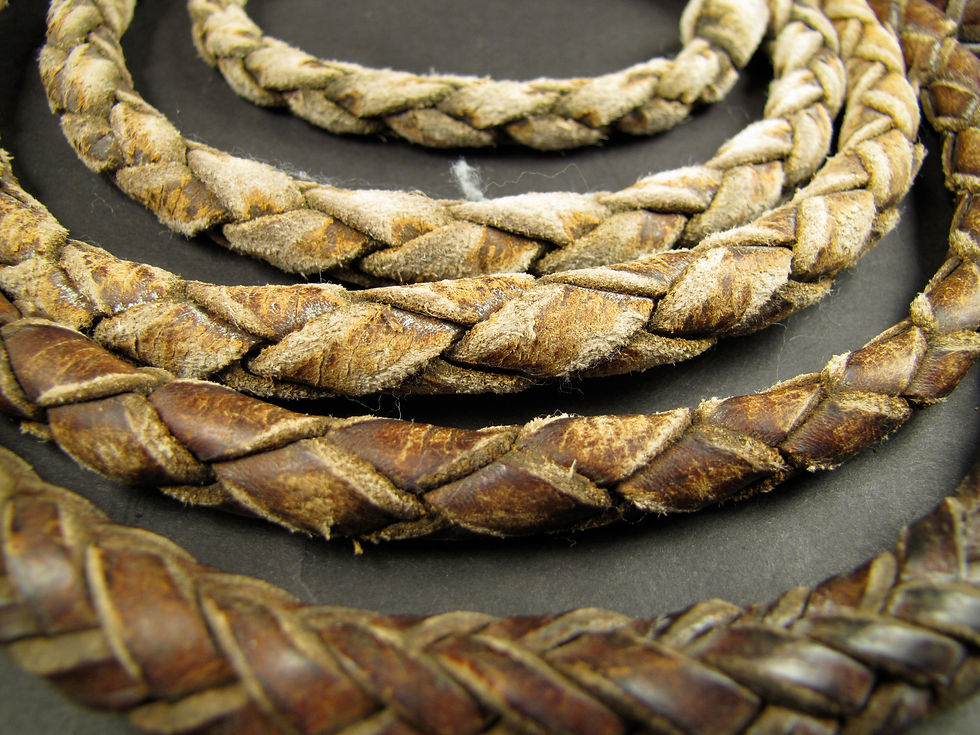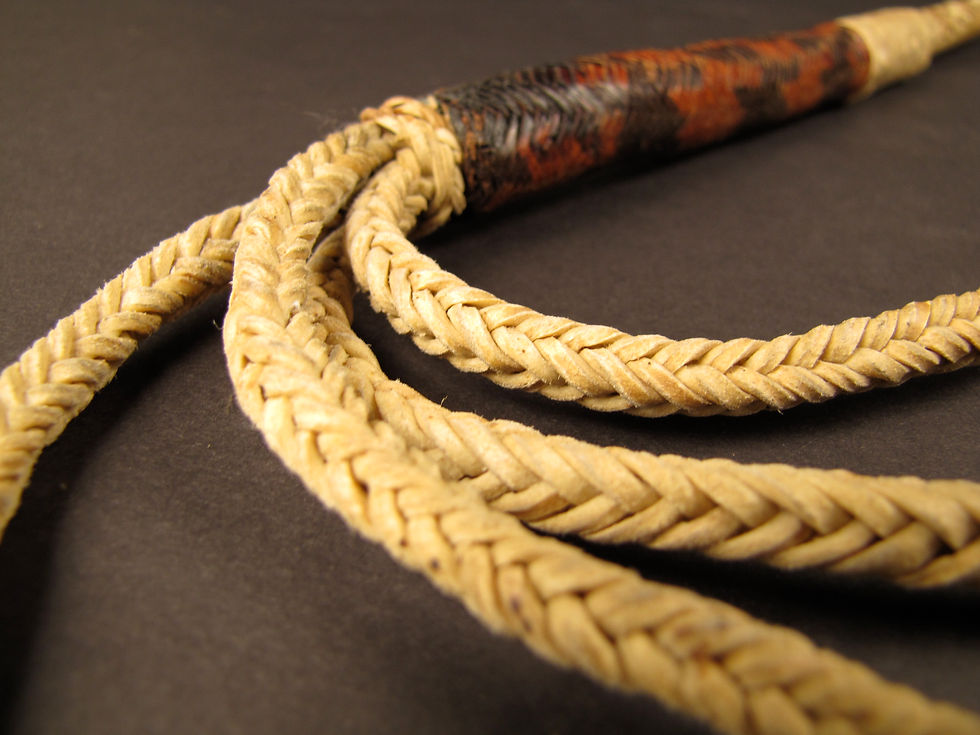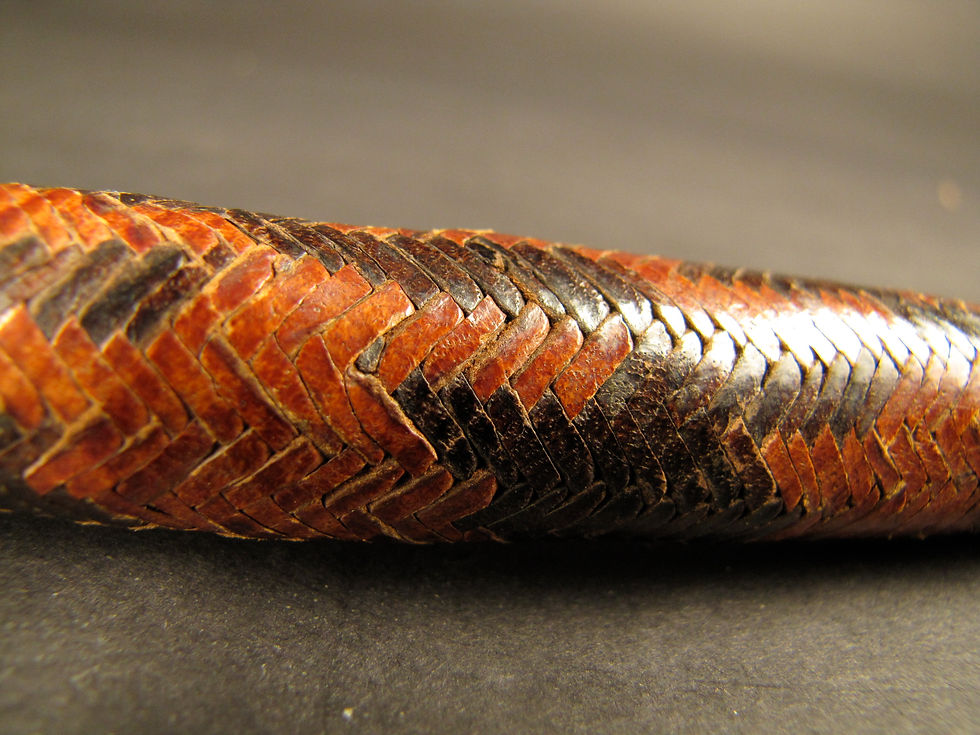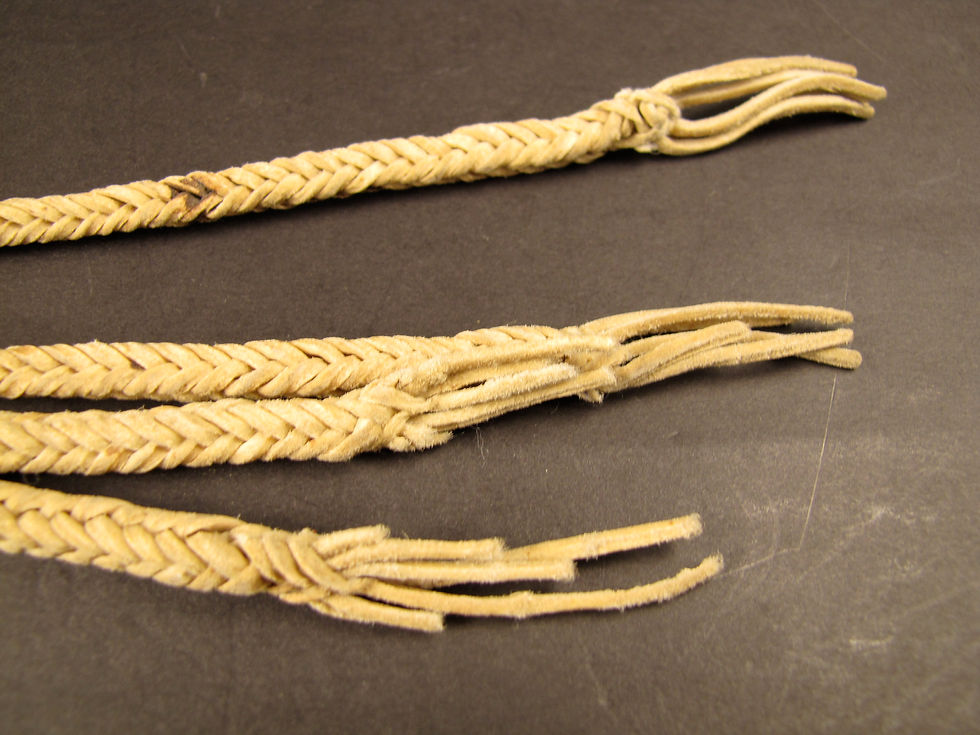The Jim and Vanita Oelschlager
Native American Ethnographic Collection




left to right: NAI.231.2010 NAI.156.2010

Whip Wood. Leather. L120" x W1.5"

Horse Quirt ca.1880 Great Plains Wood. Hide. Rope. L30" x W3.25"

Horse Quirt ca.1880 Great Plains Wood. Hide. Rope. L30" x W3.25"

Horse Quirt ca.1880 Great Plains Wood. Hide. Rope. L30" x W3.25"

Horse Bridle ca. 1890 Apache Rope. Trade cloth. Metal. Horse hair.
Saddle
ca. 1875-1890
Crow. Great Plains. Tanned Hide, Wood, Metal.
W34.5" x H28"
NAI.295.2013
Saddles are used wherever there are horses or other animals that can be ridden or carry burdens. They are made in various styles that reflect the uses and raw materials of the region. Since there were no animals that could be ridden in North America prior to European contact, saddles as a tool first appeared with the Spanish and their horses. As Native American tribes acquired horses they developed simpler saddle styles than those of Europeans.
The saddle in this exhibition is typical of the type used by the Crow tribe. We have to picture it with a blanket or hide under the saddle to protect the horse and layers of padding on top to make it more confortable for the rider. The curved saddle horn in front and the similar projection in the back were for attaching their version of saddlebags, “parfleche,” to carry food and other goods.
When women rode, their infants were secured in cradleboards attached to the saddle horn while a small child might ride behind. Saddle styles varied regionally, depending on raw materials and type of use.
The saddle in this exhibition is made of wood with rawhide covering; it was carved, stitched, nailed, and sewn in about 1900.